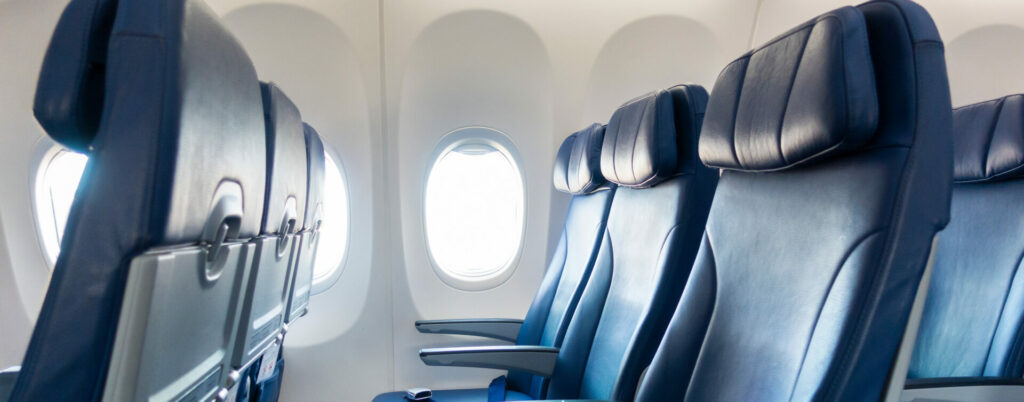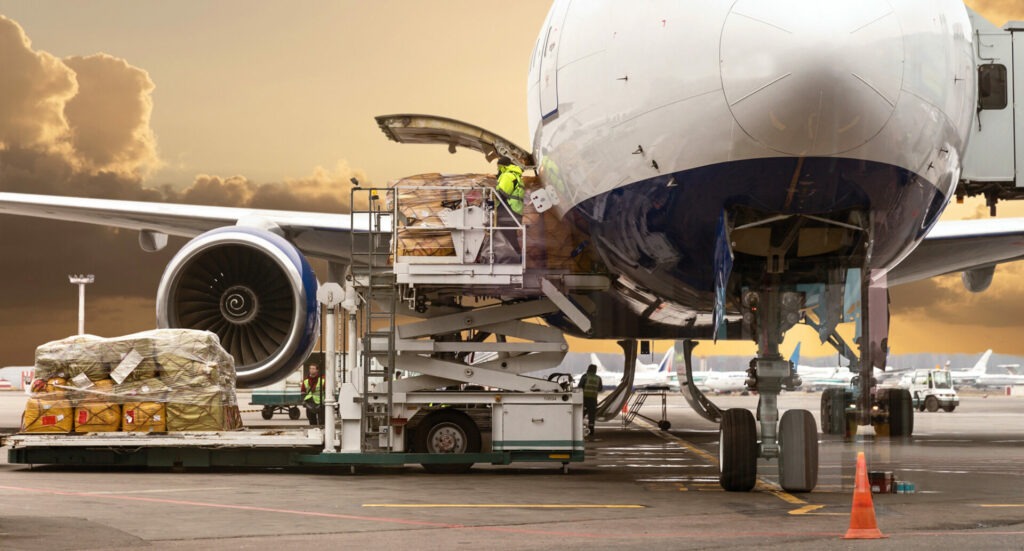Written By: Mike Ingram, President & CEO

In a time that airlines need to make as much money as possible due to their massive losses during Covid, why wouldn’t they fill every single seat on every flight? It’s not an easy answer today, but it could be… Read on.
Before every flight a pilot (or dispatch for airlines) calculates the weight and balance (W&B) of the aircraft. For business jets, this is a process where the pilot must ask each passenger their weight, as politely as possible, and how much their luggage weighs. These weights are entered into an equation, or into an application on the G1000 or Foreflight, and a point on the W&B chart is determined. There is a border around the safe operational area.

For air transport aircraft (Airbus/Boeing), the W&B is grossly modeled from the number of passengers and their estimated baggage. These numbers continue to increase as we become ‘fatter’. There are also differences when flying in the summer versus the heavier winter baggage. The FAA in 2021 sent out an advisory, “The new FAA standards will increase an average adult passenger and carry-on bag weight to 190 pounds in the summer and 195 pounds in the winter, according to AirInsightGroup. Those numbers are up from 170 and 175 pounds, respectively. The new standards state that airlines must increase the average weight for female passengers and their carry-ons from 145 pounds to 179 pounds in summer, and from 150 pounds to 184 pounds in winter. For males, the average will increase from 185 pounds in summer to 200 pounds, and from 190 pounds to 205 pounds in winter.” (Article)
If the aircraft is overweight or out of balance (the Center of Gravity (CG) is too far forward or back), then the passengers must be moved around or weight must be removed. This extra weight is lost either by leaving luggage behind, or the more likely scenario of not filling up your gas tanks. In the case of airlines, it can be by leaving revenue-generating seats empty.

Since the beginning of flight, the W&B has been a calculation, not a measurement. A measurement of weight would be putting the airplane on a scale. Not the easiest, or quickest, task to accomplish…so until recently, we’ve been forced to only ‘calculate’ the W&B. There is now an innovative solution to measuring the aircraft weight and CG.
A small company called Avix (www.avixaero.com) has solved this problem of weighing the airplane by installing pressure sensors in each of the airplane struts. There are three struts that connect the wheels to the structure of the aircraft. The struts are pneumatic and filled with a mixture of mostly nitrogen. This blended air leaks so there is a valve on each strut that the maintenance crews must periodically check and when low, fill with more nitrogen. Avix has designed a part that allows the pressure sensor to be installed while also allowing the maintenance crew to inject more air to the struts. Pressures from each sensor are collected into a central embedded computer and data recorder, the AIS-100 with 4G transceiver made by Shadin, and sent off airplane via and 4G to the cloud. Within the cloud, these values calculate the overall weight of the airplane and the CG.

Shadin was selected due to our history with developing data collection and conversion products. We have been designing, building, and certifying these Avionics Interface Systems (AIS) adaptors for many years in many different configurations, see the full selection at, https://www.shadin.com/avionics-products/ais-adapters-converters/. The referenced photo is of the AIS-100 with the cellular antenna.

The Avix system has been installed on a few aircraft and is now undergoing testing and certification. Avix has STCs on the Boeing 737-NG and the 777 aircraft and has proven that their system is extremely accurate. In fact, tests have shown that it is more accurate than the scales at airports that weigh cargo on aircraft. So why doesn’t every airplane have the Avix W&B calculator? Well, we hope that they will over the next few years, but for now it’s not completely validated on real aircraft. These tests will happen later this year and then the next step will be to convince airlines and/or cargo companies that they need it.
Airlines are in a tough position these days; they work on a very tight budget since their profit margins are very small. Even though we, the passenger, spend hundreds of dollars per flight, the amount of overhead to operate an airline is huge. Think about the costs involved – pilots, flight attendants, dispatch, maintenance crews, airplanes, fuel, fuel, and more fuel. Then they have to be competitive with each other since every passenger is always looking for the best deal on sites like Orbitz or Expedia. Sorry for the digression, but my point is about why would an airline buy the W&B calculator? Because it will save them fuel costs and reduce their maintenance.
Saving fuel by knowing your weight and CG is not as straight-forward as airlines would hope. Before getting into the details, let’s first agree that an airplane that flies most smoothly through the sky has less drag which means that less fuel is used to get to its destination. The drag on an airplane can be affected by where the CG is located. For example, on a 737 a more aft CG is better than a more forward CG, but both have more drag than a perfectly balanced CG. But how does United Airlines get the CG in the best location? I can tell you it’s not going to be by moving that overweight family from row 10 to row 28…
In order for airlines to best utilize the W&B data to put the CG in a better location, they will need to modify the loading procedures for the cargo in the belly of the airplane. Today, luggage, mail, and USPS packages get loaded somewhat randomly in the luggage compartments. If Delta knew that moving 50 suitcases to the back luggage compartment could save them 500 gallons of fuel per day, then I think they would do it. So, airlines need get the Avix system installed to tell them what the weight is and where the CG is so that they can over time load the airplane appropriately.
The Avix system has been under development for many years, and it has overcome many of the technical challenges. For example, the struts don’t freely move up and down as the weight is adjusted. There is a friction that, when exceeded, the strut slips or compresses. This is called ‘stiction’. You may have felt this when walking on an airplane and it adjusts downward by a couple of inches as more people load. This will cause the Avix pressure sensors to read a wrong value, and the Shadin box to send it to the cloud. Because of this stiction, the system is most accurate when it begins its taxi and the struts more freely move to an average position. A value of the W&B and CG will be taken once the doors are shut, which will be mostly based on the historical data of what the strut pressures are with stiction. When taxi begins, then the final and most accurate value will be transmitted by the Shadin AIS-100 4G to dispatch and the pilot.
So back to the original question: why are the back seats empty? They are empty because if an airline is overweight or the CG is too far towards the tail, then the airplane may be unsafe; not to mention the large fines from the FAA if they are caught. So even through a conservative $200/seat, when multiplied by 12 seats, or $2,400 per flight, the risk outweighs the decision to leave them empty.

When will we see this Avix system? The hope is that we will pass our tests at Hillwood Airlines this fall, get an updated STC on the 737NG, and win some new customers after they see the results from Hillwood. My guess is that we will see orders and installations for this new system in 2023.
The current plan is to get STCs on the air transport aircraft, but the system will work on most any aircraft that has a strut. The first non-air transport aircraft would be large cabin business jets (Gulfstream, Bombardier, Dassault) and military aircraft (C-130, C-5, etc). The Avix system is called the Strut Data Collection System (SDCS) and could be readily adapted to your aircraft. If you have an interest in the system then reach out to me, anyone at Shadin, or Avix (www.avixaero.com).
